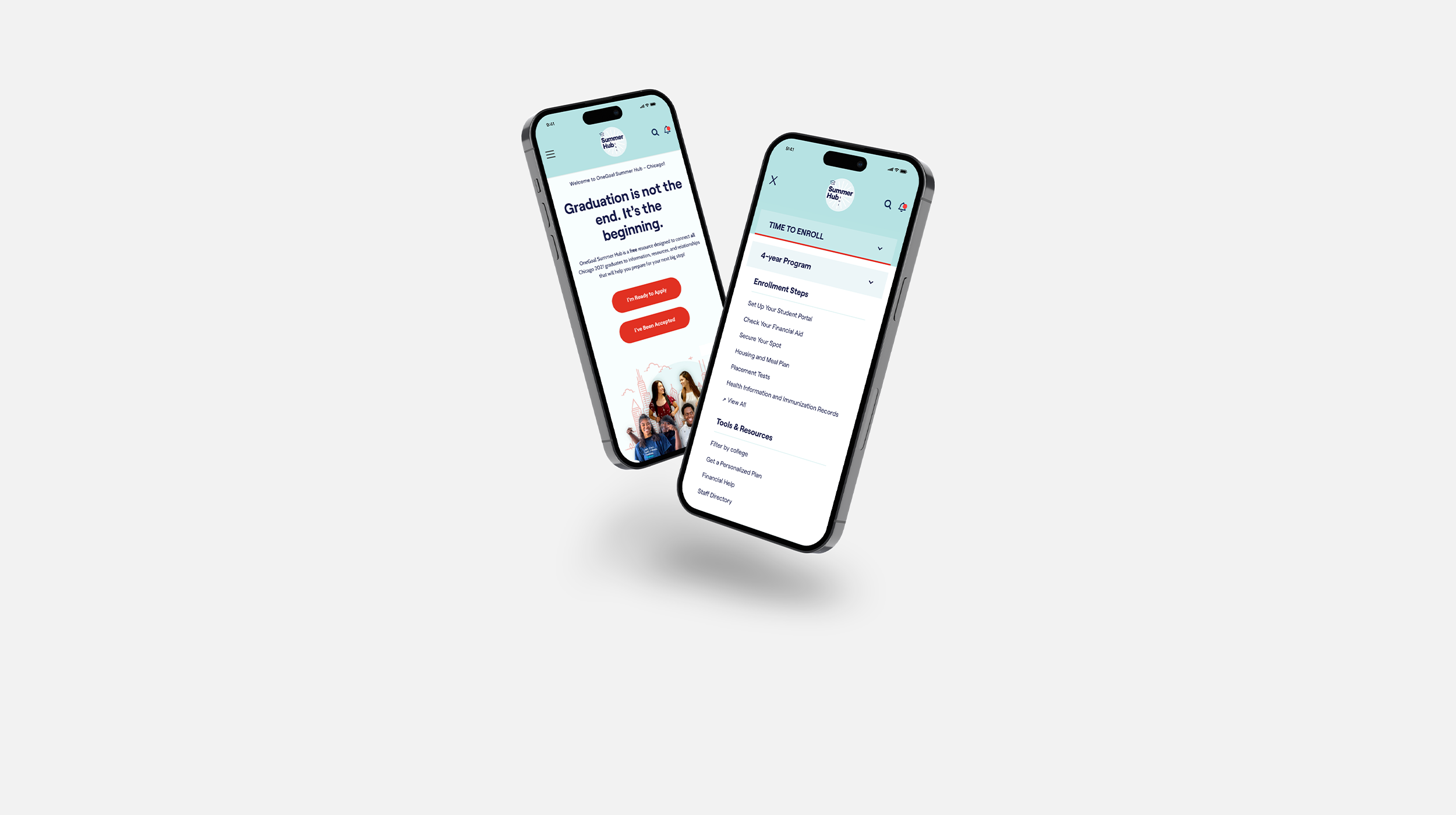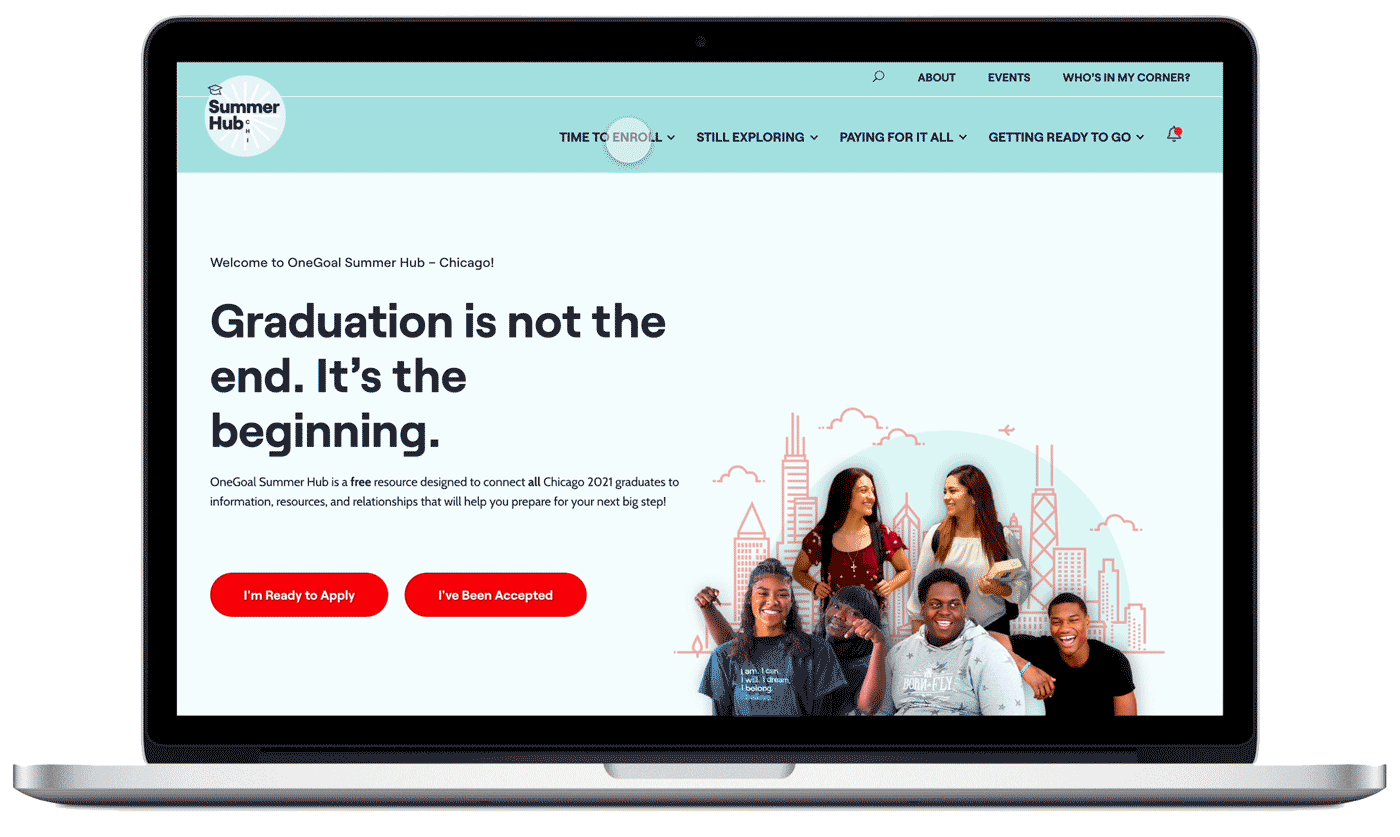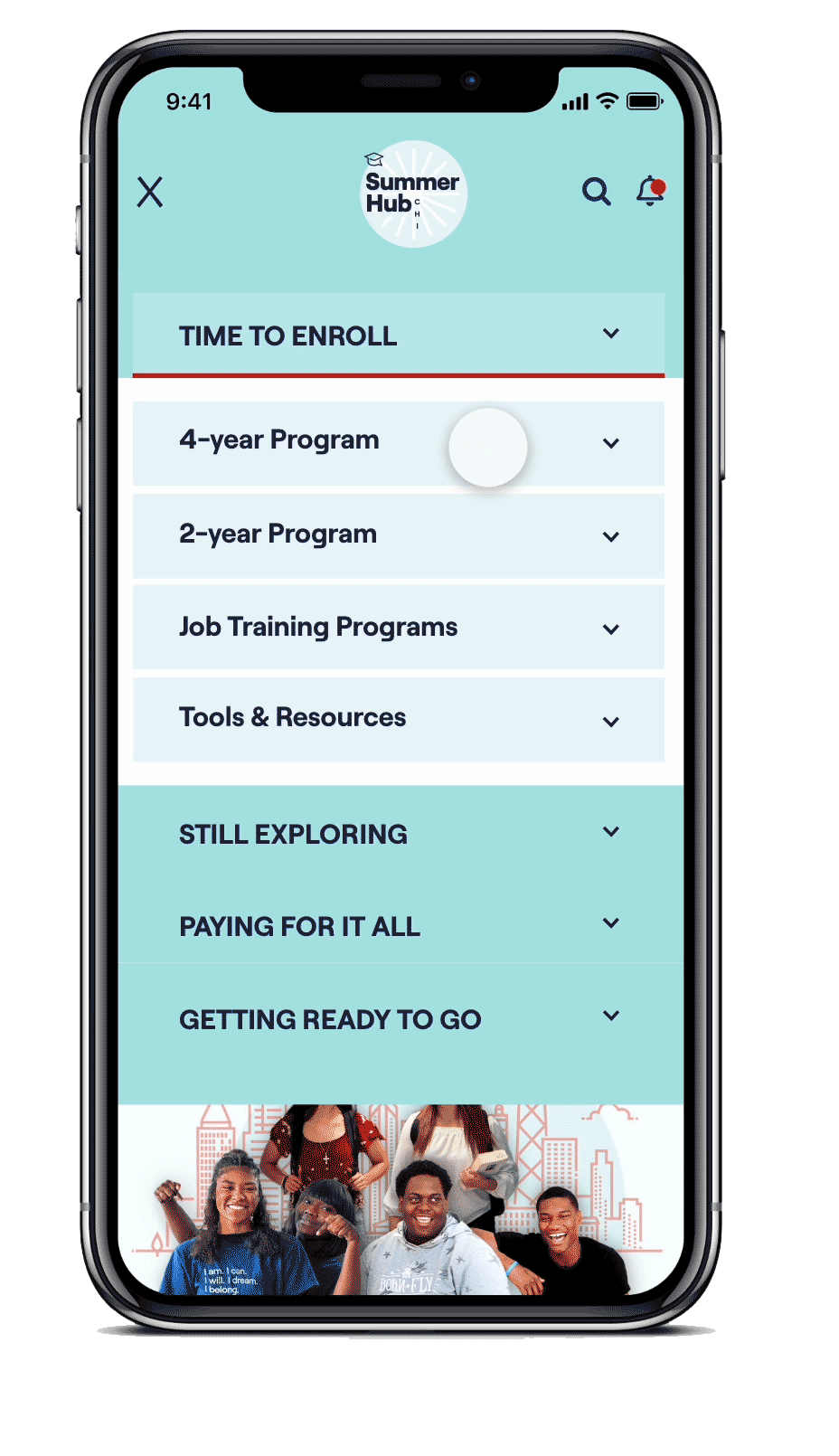
Structuring a Digital Hub for Student Success
UX | Non-profit Information Architecture | 2021
OneGoal Chicago is a nonprofit dedicated to helping high school students, particularly those in under-resourced communities, find success after graduation. Their vision was to create a digital hub that could guide students step-by-step through post-graduation decisions, offering personalized resources and real human support along the way.
Why It Mattered
The team’s goal wasn’t just to launch another website. It was to create a digital hub that gave students clarity and confidence during one of the most uncertain times in their lives. The platform needed to simplify next steps, highlight available support, and provide access to real people who could help when guidance was needed most.
For teachers and staff, it also needed to serve as a reliable tool they could reference during conversations, helping them direct students to accurate and trustworthy information.
The Challenge
With multiple stakeholders and an evolving set of ideas, the biggest challenge wasn’t creativity, it was clarity. Each team member brought valuable insights, but we needed a structured, shared framework to organize them efficiently. Tight launch timelines also added pressure, with graduation season quickly approaching.
My Responsibilities
Led information architecture strategy, creating a clear structure for complex content under tight deadlines.
Facilitated client collaboration, building and maintaining a shared Miro board that served as both a brainstorming space and a living sitemap.
Ran working sessions with stakeholders, translating ideas into actionable structures and aligning diverse perspectives into a single vision.
Supported the offshore design team, setting them up for success with clear assignments and a reliable source of truth for navigation and page content.
Delivery Team
Lead UI/UX Designer (me)
Offshore UI/UX Designer team (~4 designers)
Lead SaaS Developer
“This class survived COVID. We need to send an inspiring message and rebrand them as the Comeback Kids! Empower them to own their success.”
Process
Collaboration
To bring structure to a complex vision, I created a collaborative Miro board that quickly became our most valuable tool. It served as both a brainstorming canvas and a living sitemap, accessible to stakeholders anytime. I color-coded page layers, CTAs, and “wildcards” (items that could cause issues later) so we could track priorities and flag risks early.
Co-Creation
During working sessions, we refined ideas into a clear, navigable structure. Between our meetings, stakeholders used the board individually and in their own discussions, then returned with updates I could help shape into the site map. This adaptive process let me be a part of the way the client naturally collaborated, giving them ownership while still ensuring consistency.
Alignment
The Miro board served as a single source of truth, keeping everyone aligned as up to five designers worked on pages simultaneously. Beyond assigning pages, it allowed the team to see how their work connected within the larger structure and what content belonged where. Just as importantly, it provided clarity when I wasn’t available to answer questions, keeping work moving smoothly and preventing gaps or overlaps as designs came together.
Translating Structure into Navigation Design
Homepage Designs
The homepage demonstrates how the information architecture shapes real content placement. Key sections, including featured resources, quick actions, and guided pathways, were drawn directly from the sitemap, ensuring the priorities we mapped translated seamlessly into the design.
Quick links in the hero section let students jump straight into a personalized experience.
A prominent Chat call-to-action keeps the human element at the forefront.
Top level navigation is expanded with additional context to guide students down the right path.
Categorized quick links keep resources organized and easy to find for returning users.
Outcome
By launch, we had a clear, structured information architecture that aligned multiple stakeholders and set the design team up for success. The hub went live on schedule, ensuring students had access to reliable, easy-to-follow resources at a critical moment. Beyond the site itself, the collaborative process created shared ownership, giving the client a tool they could continue using to adapt and grow the platform.
Key Takeaways
Collaboration works best when adapted to the client’s style. By turning the Miro board into their working tool, I learned that giving stakeholders ownership builds stronger alignment and faster decisions.
Information architecture brings clarity, not just structure. Using color coding and hierarchy in the IA surfaced potential risks and kept us from hitting roadblocks later.
A single source of truth keeps momentum. With up to five designers contributing at once, the shared IA document provided visibility, consistency, and answers even when I wasn’t available.




